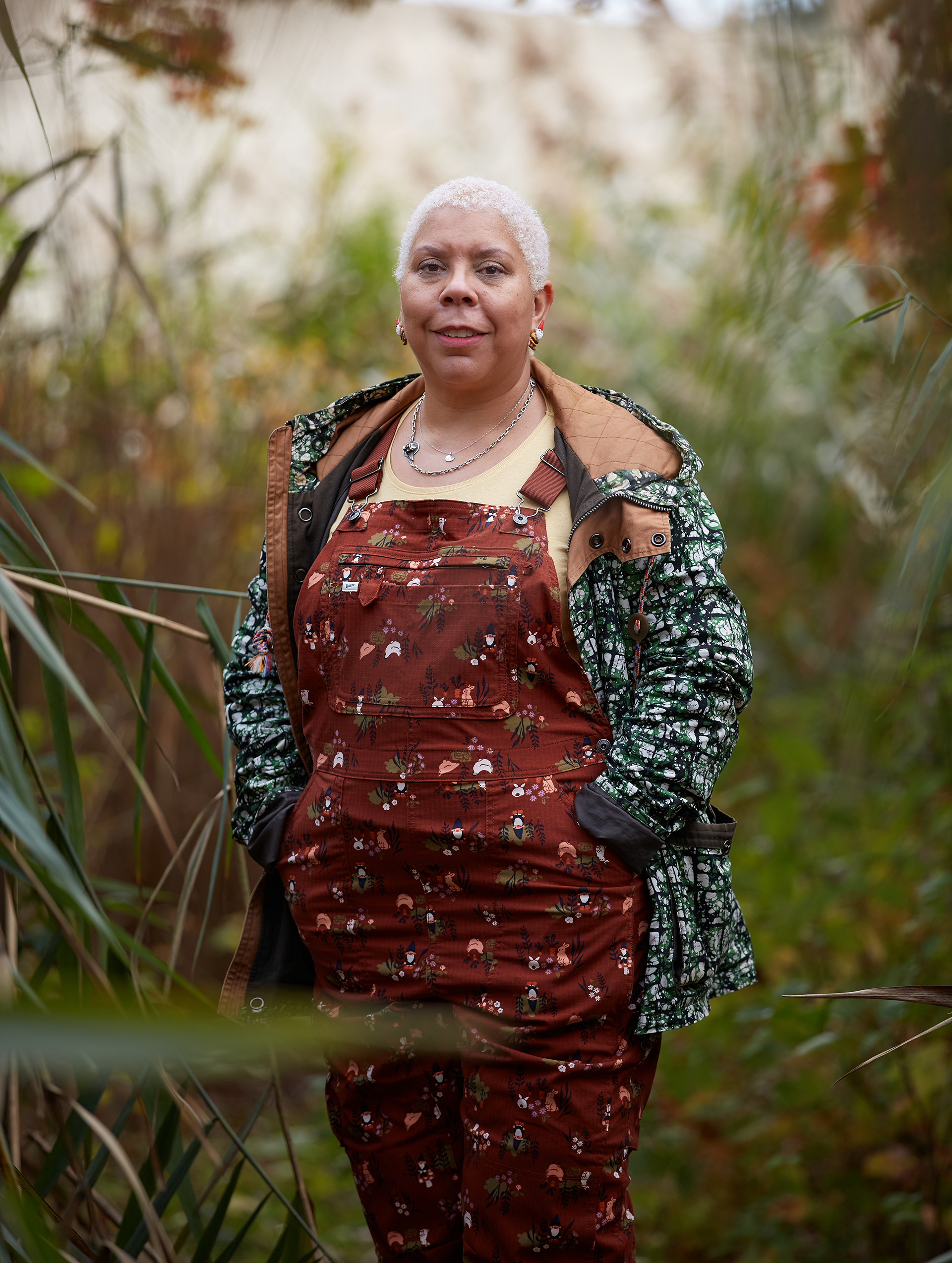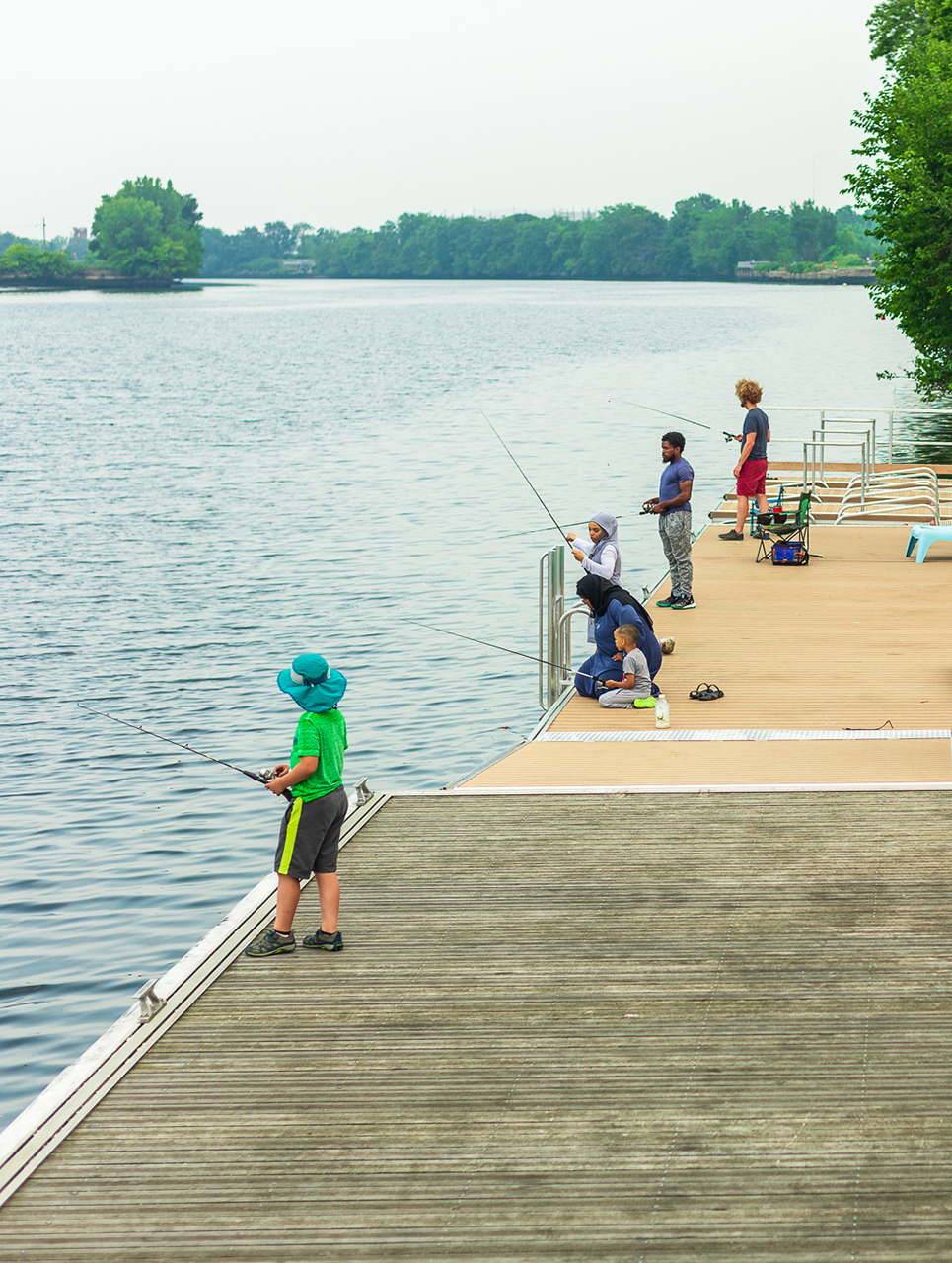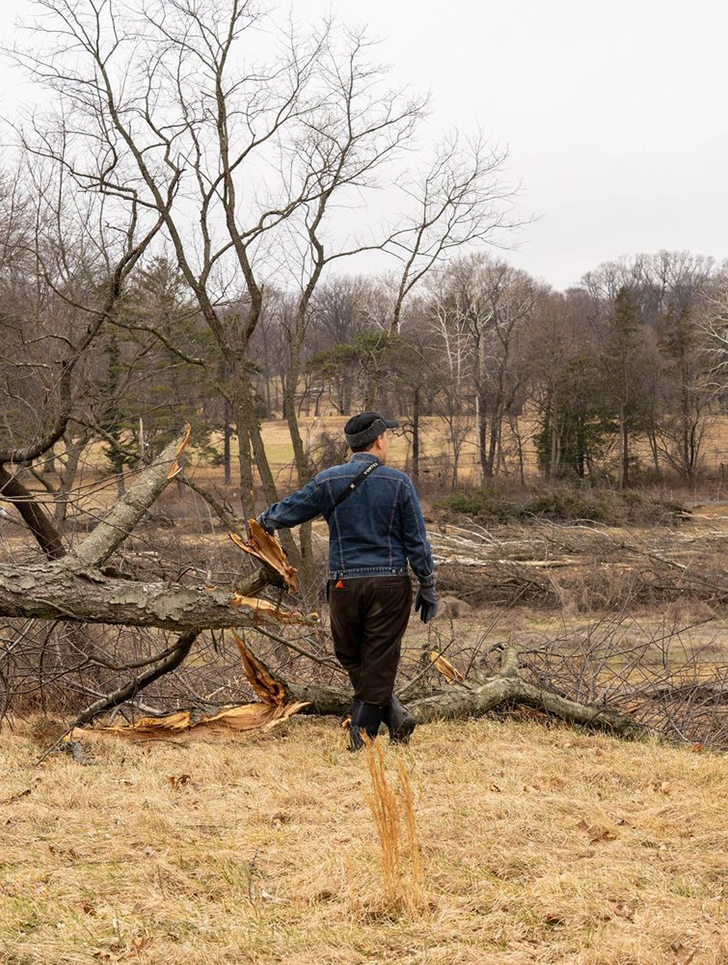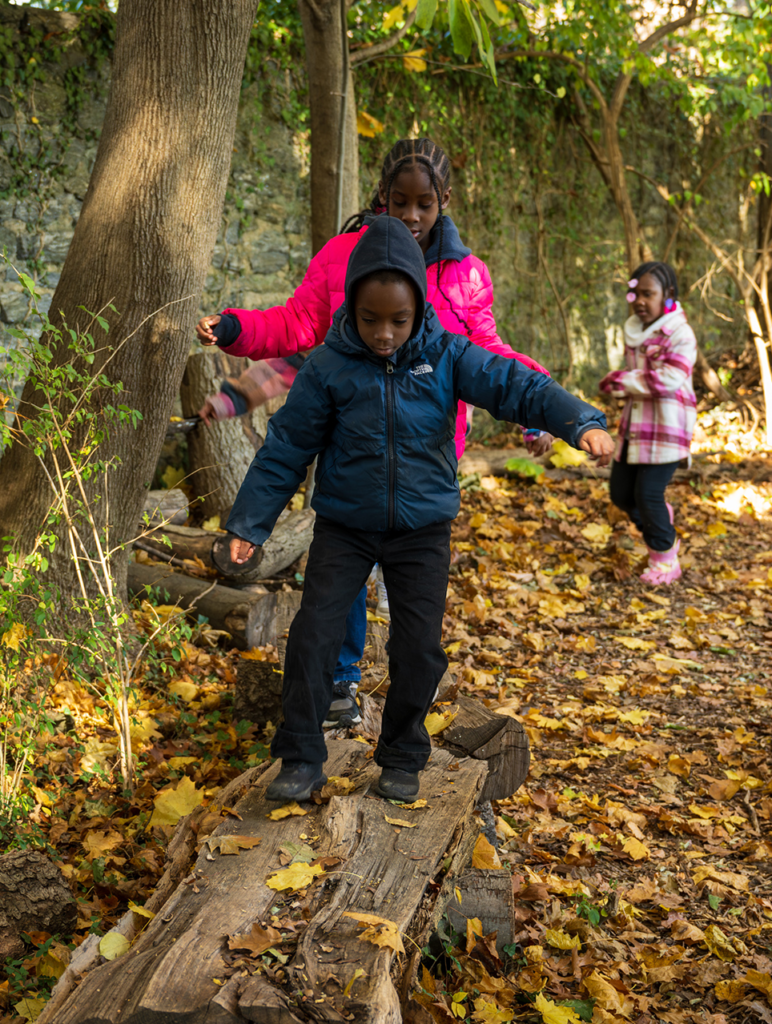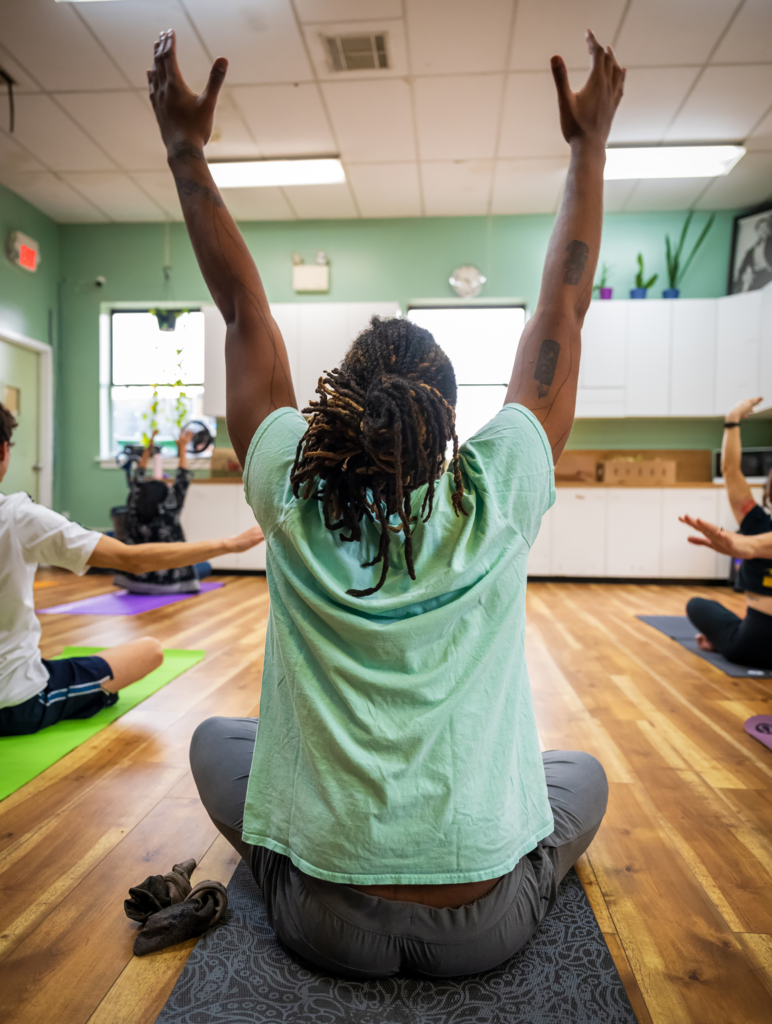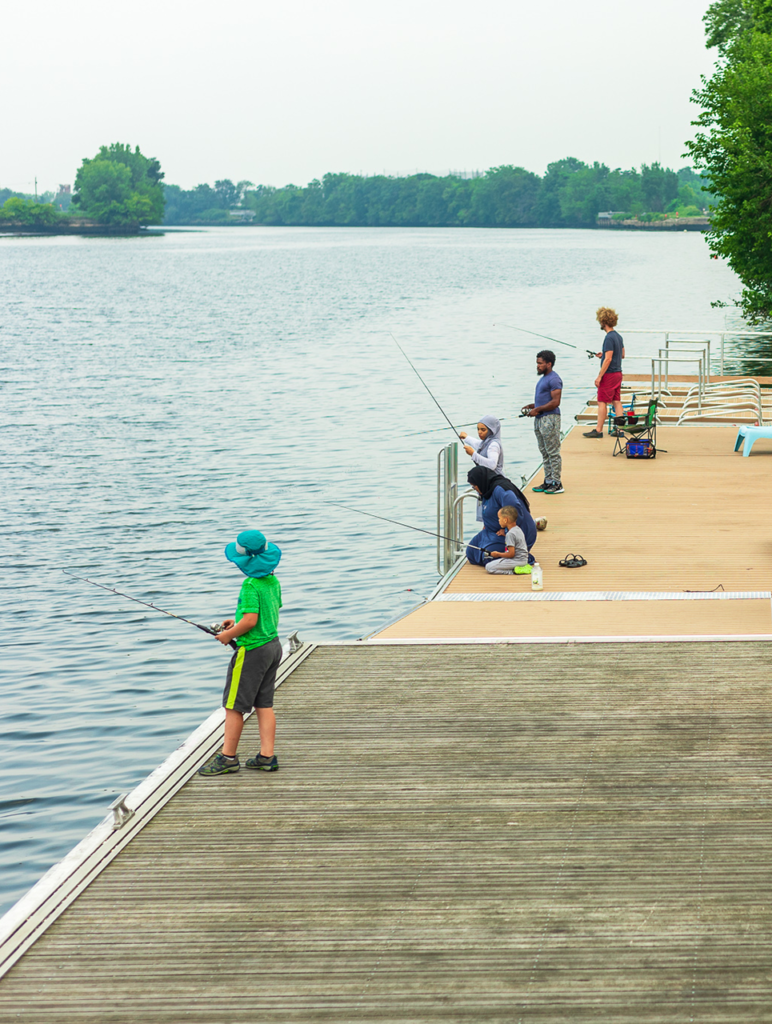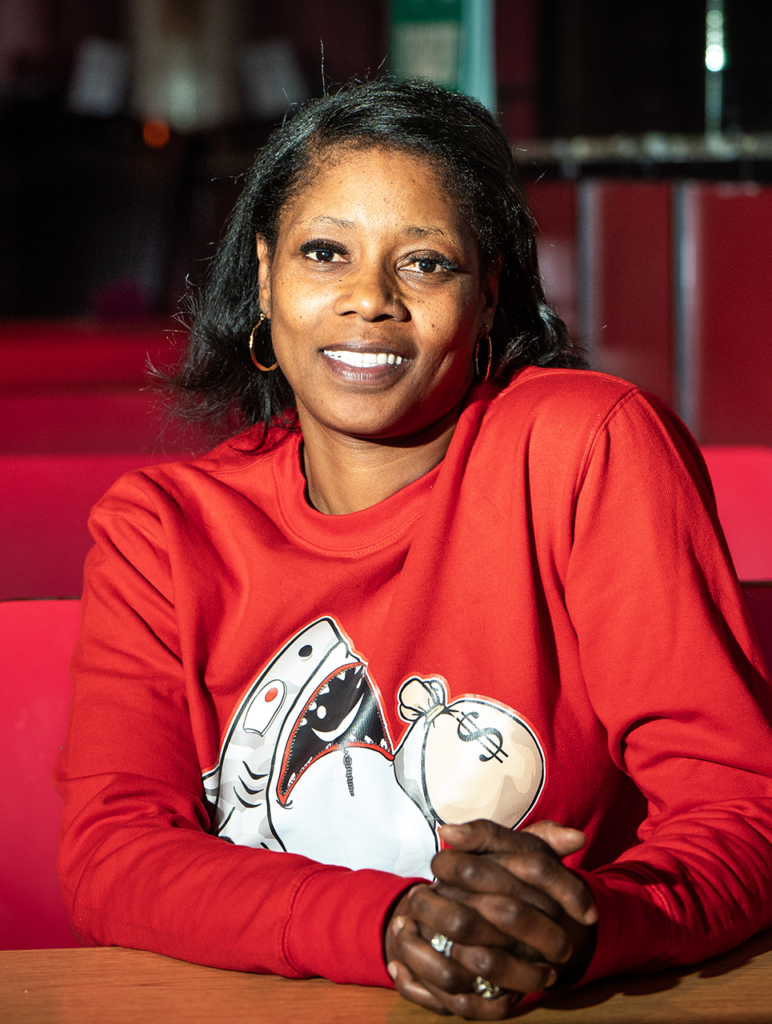On a brilliant October morning in FDR Park, a small group coalesces around a striking figure. Sporting a cap of tight platinum curls, “The Thursday Murder Club” earrings and floral overalls that would provide perfect camouflage in a perennial garden at high season, Lady Danni Morinich welcomes aspiring foragers to her two-hour exploration of wild plants. She sets the tone with the first of many memorable statements: “A weed is a plant whose value you haven’t yet understood.”
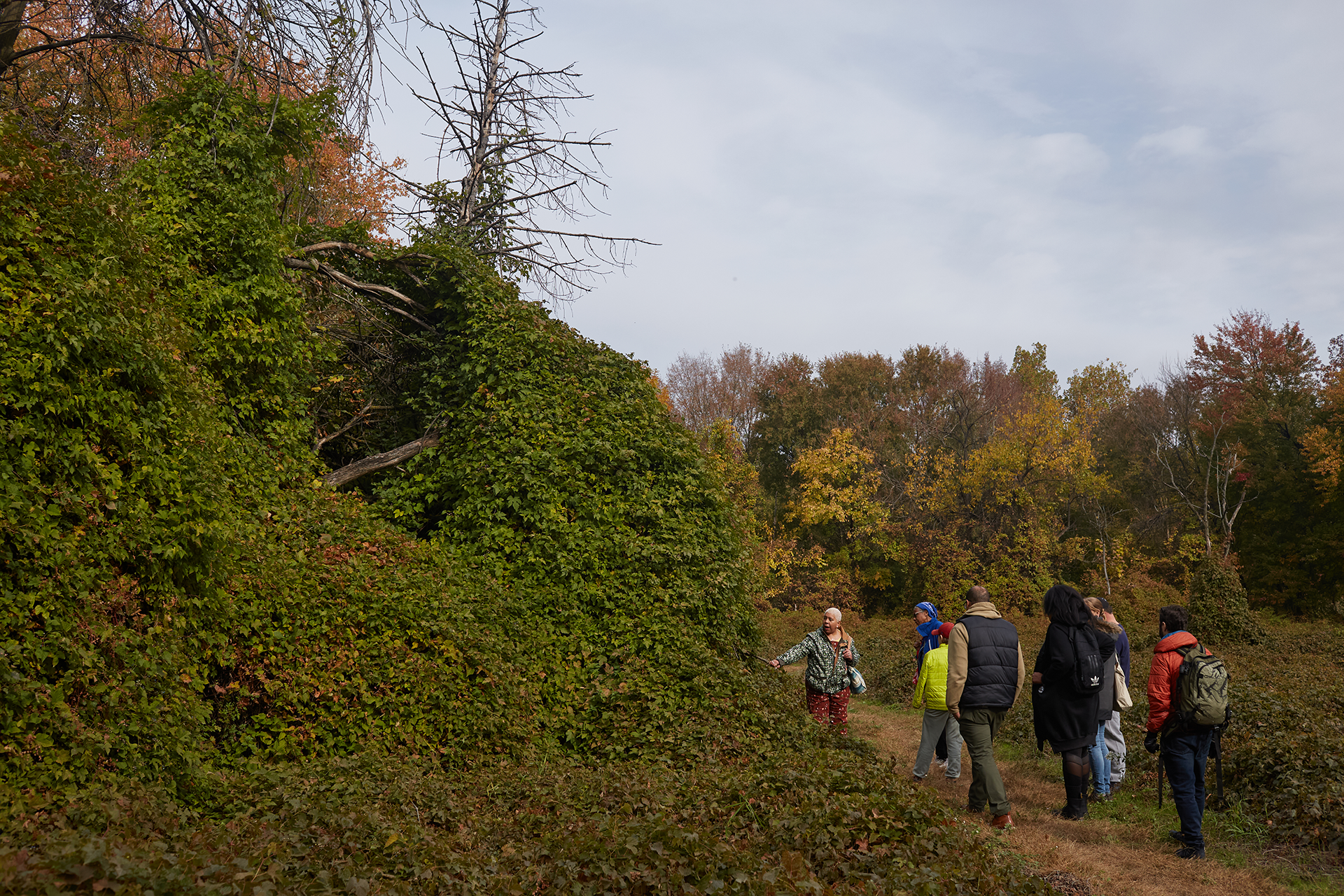
Morinich proceeded to school the group in foraging etiquette. For starters, foraging is not only for eating. Her four-season foraging yields plants for culinary, medicinal and other uses. Rule number two is: “Know and go slow.” Self-described as someone who “measures twice and cuts once,” Morinich warns against taking chances on unfamiliar plants. It’s always a bad idea to make a meal from a bunch of random stuff. She cautions against relying on unvetted internet sources and puts her trust in old hardback reference books, though in the field she checks “look-alike” plants with the Picture This app on her phone.
You are walking through the home of many creatures. If you take something from their home, use it. Don’t waste it.”
— Lady Danni Morinich, Landed Gentress
Before the picking starts she urges the group to be respectful. “You are walking through the home of many creatures. If you take something from their home, use it. Don’t waste it.”
We’ve only taken a few steps when Morinich bends down at the first edible, a clump of garlic grass. She pinches some off and passes it around for the group to smell, then digs up a few tiny bulbs. The tops are flavorful garnish while the bulbs, when steeped in honey as her grandmother used to do, offer respiratory relief during cold and flu season.
Lady Danni — an honorary title acquired when friends gifted her a tiny parcel of land in Scotland — is the proprietress of the multifaceted business Landed Gentress Handcrafted Herbals. Through her website, Morinich offers guided tours and workshops and retails her handcrafted elixirs, tinctures and teas.
Morinich brings heavy bona fides to her forager’s role. She has a Master Herbalist diploma from the Centre of Excellence; is a member of the American Herbalist Guild and the American Botanical Council; an alumna of The Wild Foodies of Philly; and a wild plants tour leader for the Free Library of Philadelphia, Mural Arts Philadelphia and other community organizations.
An initial foray with Wild Foodies in 2016 launched Morinich into researching wild plants. Morinich describes her first encounter with foraging as a “Damascene conversion” — she felt as if she was discovering her true place in the world. Wild Foodies founder Lynn Landes recognized Morinich’s passion and encouraged her to co-lead Wild Foodies tours as preparation for launching Landed Gentress in 2020.
At the FDR Park walk, her bright overalls are embroidered with the word “crone.” “Crone is one of those labels people of a certain age don’t want, but I’m reclaiming it the same way some people want to reclaim ‘bitch,’” she says. “It’s about knowing who you are and what you want, knowing that you have wisdom to share. If anybody else thinks that because you’re well over 50 you’re past your sell-by date, I want to say, ‘I am not! I will not be invisible.’” After only a few minutes in her company, it’s impossible to imagine anyone dismissing the 59-year-old as invisible.

She grew up in a Wilmington, DE, household with strong connections to the natural world. Her grandmother taught her to make soap; her father enjoyed hunting, fishing and being in the woods. Morinich, though, was known to be a “mosquito attractor,” she says. “The kid allergic to almost everything and scared to go outside.” After her father died, she says she felt drawn to the outdoors as a way of reconnecting with him. “I went into the woods to find my dad and I found so much more.”
Morinich approaches her work as the “opposite of a ‘Magical Mystery Tour.’” Crediting the discipline she acquired as an Ursuline Academy student, it’s important to her to provide Latin plant names and to share accurate research about the history, uses and context of every item. With wit and colorful descriptions, she points out a rich array of what most consider worthless weeds: white snakeroot, burdock, late boneset, rose swamp mallow, mugwort and timothy grass.
Goldenrod, she explains, does not cause an allergic reaction because its pollen is not airborne like ragweed, the true culprit. Sweet clover contains coumarin, the compound used in pharmaceuticals as a blood thinner. Purple loosestrife is a natural antibiotic. Duckweed is not pond scum but a prolific plant that prevents algae overgrowth and is a valuable food source for aquatic life.
Lots of appreciative “wows” float up from her audience as Morinich narrates stories of trees such as the northern catalpa, the groundsel, the sweet gum and the bald cypress, all majestically growing in FDR Park. She informs us that the box elder can be tapped for syrup and white pine needle tea contains five times more vitamin C than lemons. Her comments provide links to a time when poverty and lack of access to medical treatment necessitated using plants as medicinals, a rich tradition among rural and Black communities.
As the group observes a dandelion patch, Morinich recounts a creation story in which the angels asked every plant what it would like to be. The dandelion wants to be “golden like the sun, round and white like the moon, with seeds as beautiful as the stars.” In her animated storytelling, Morinich shines as a teacher whose ambition is to change the way we see the natural world. “If all of a sudden you look at something you’ve looked at every single day of your life and thought it was absolutely useless and now you get it, that’s worth it to me.”
Despite her deep expertise, Morinich still gets jitters before leading tours and workshops. Two things motivate her: a belief in the healing power of nature and a commitment to encourage more people of color to exercise their rights to be on the land. Especially in an urban setting, it’s too easy to become detached from nature, particularly for Black and Brown people who may feel they are not welcome or safe exploring parks and woodland settings. She wants more people of color to experience the power of nature, though she admits they have to be prepared to face suspicion in what have customarily been areas of white privilege.
But the effort is worth it. Morinich believes that “Nature offers succor for everyone. Spending just 20 minutes outside listening to the trees, breathing the air, feeling the sunshine, and looking at the plants is calming — and it’s free.”
Whether the topic is crones, or weeds, or the power of nature, Morinich’s optimistic philosophy informs her work. “There are a lot of things in life people are really quick to dismiss,” she says, “but if you just understand what they’re capable of, that mindset changes everything.”

